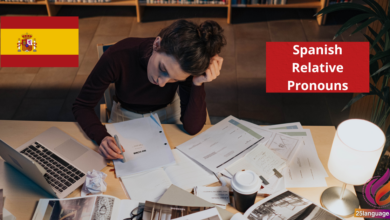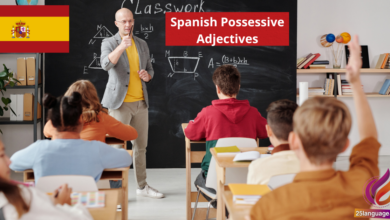How to Express Doubt and Certainty in Spanish

Navigating conversations in Spanish often involves balancing certainty and doubt, much like in English. Mastering how to express thes nuances can elevate your speaking skills and deepen your understanding of the language. In this lesson, we’ll explore key phrases and grammatical structures that will empower you to confidently convey uncertainty or assertiveness in your statements. Get ready to enhance your communication abilities and express yourself more fluently in various contexts!
Exploring the Nuances of Doubt and Certainty in Spanish Language
In Spanish, expressing doubt and certainty involves using specific verbs, phrases, and grammatical structures that convey the speaker’s attitude towards the facts presented. understanding the difference between indicative and subjunctive moods is crucial. The indicative mood is used for statements of fact, while the subjunctive mood is employed for expressions of doubt, wish, or hypothetical situations. For example:
- Indicative: Creo que ella viene. (I believe that she is coming.)
- Subjunctive: No creo que ella venga. (I don’t believe that she is coming.)
This shift from certainty to uncertainty is marked by the change in verb forms.Additionally, certain verbs and phrases signal the use of the subjunctive, such as dudar que (to doubt that), temer que (to fear that), or no estar seguro de que (to not be sure that). Below is a table summarizing these key expressions:
| Spanish Expression | Use of Mood | English Translation |
|---|---|---|
| Dudo que | Subjunctive | I doubt that |
| Estoy seguro de que | Indicative | I am sure that |
| No creo que | Subjunctive | I don’t believe that |
| Puedo asegurar que | Indicative | I can assure that |
Mastering Expressions of Uncertainty and Confidence in Spanish
In Spanish, expressing uncertainty and confidence can be achieved through various phrases and grammatical structures. The use of modal verbs and specific expressions plays a crucial role. Key phrases include:
- Es posible que… (Its possible that…)
- No estoy seguro/a de que… (I’m not sure that…)
- Creo que… (I think that…)
- Es cierto que… (It’s certain that…)
For example, to indicate uncertainty, you might say “Es posible que mañana llueva.” (It’s possible that it will rain tomorrow.) Conversely, demonstrating confidence can be done by stating “Creo que él vendrá a la fiesta.” (I think he will come to the party.) It’s critically important to note that the subjunctive mood frequently enough appears in these constructions of uncertainty,as in “No estoy seguro de que ellos estén listos.” (I’m not sure that they are ready.)
| Spanish Expression | English Translation | Grammar Note |
|---|---|---|
| Es posible que… | It’s possible that… | Often followed by subjunctive verb form. |
| No estoy seguro/a de que… | I’m not sure that… | Use subjunctive for uncertainty. |
| Creo que… | I think that… | Indicative mood is typically used here. |
| Es cierto que… | It’s certain that… | Indicates strong confidence; indicative mood. |
Practical Strategies for Conveying Doubt and Certainty in Spanish
In Spanish,expressing doubt and certainty relies heavily on the use of certain phrases and the subjunctive mood. When conveying certainty, you can use phrases like “estoy seguro de que” (I am sure that), which indicates a firm belief in the statement that follows. For example, you might say: “Estoy seguro de que vendrá a la fiesta.” (I am sure that he will come to the party.) in contrast, when expressing doubt, you often use the subjunctive mood along with phrases such as “dudo que” (I doubt that) or “no creo que” (I don’t believe that).For instance: “Dudo que él tenga el tiempo suficiente.” (I doubt that he has enough time.) It’s critically important to note that using the subjunctive correctly frequently enough implies a level of uncertainty, which is central to expressing doubt in Spanish.
Another helpful strategy involves using specific verbs and expressions that navigate between certainty and doubt. Commonly used verbs include “creer” (to believe) when you are certain, contrasted with “no creer” (not to believe) when expressing doubt. Below is a simple table that summarizes essential expressions and examples:
| Spanish Expression | Translation |
|---|---|
| estoy seguro de que… | I am sure that… |
| Dudo que… | I doubt that… |
| No creo que… | I don’t believe that… |
| Creo que… | I believe that… |
| Es cierto que… | It’s certain that… |
Utilizing these expressions correctly can significantly enhance your ability to articulate feelings of doubt and certainty in everyday conversations. By practicing these structures and integrating them into your dialogues, you will improve your fluency and confidence in speaking Spanish.
Building Fluency: How to Discuss Doubt and Certainty Effectively in Spanish
To express doubt and certainty in Spanish, it’s crucial to understand how to use phrases and grammatical structures effectively. For certainty, the indicative mood is typically used, whereas the subjunctive mood is employed for doubt. Key phrases that indicate certainty include es cierto que (it’s certain that), no hay duda de que (there’s no doubt that), and estoy seguro/a de que (I’m sure that). For instance, you could say:
- Es cierto que la tierra es redonda. (It’s certain that the Earth is round.)
- No hay duda de que ella vendrá. (There’s no doubt that she will come.)
- Estoy seguro de que ellos están en casa. (I’m sure that they are at home.)
Conversely, to express doubt or uncertainty, the subjunctive is needed. Common expressions of doubt include dudo que (I doubt that), no creo que (I don’t believe that), and es posible que (it’s possible that). An example of these phrases in context would be:
- Dudo que él llegue a tiempo. (I doubt that he will arrive on time.)
- No creo que tengamos clase mañana. (I don’t believe that we have class tomorrow.)
- Es posible que llueva esta tarde. (It’s possible that it will rain this afternoon.)
| Spanish Example | Rule | English Translation |
|---|---|---|
| Es cierto que | Indicates certainty (indicative mood) | It’s certain that |
| Dudo que | Indicates doubt (subjunctive mood) | I doubt that |
| No hay duda de que | Indicates certainty (indicative mood) | There’s no doubt that |
| No creo que | Indicates doubt (subjunctive mood) | I don’t believe that |
| estoy seguro/a de que | Indicates certainty (indicative mood) | I’m sure that |
| Es posible que | Indicates doubt (subjunctive mood) | It’s possible that |
Closing Remarks
¡Excelente trabajo en esta lección sobre cómo expresar duda y certeza en español! Hemos explorado las diferencias entre frases que manifiestan confianza y aquellas que reflejan incertidumbre, aprendiendo a utilizar estructuras como “creo que,” “no estoy seguro,” “es posible que,” y “es cierto que.” Estos matices son esenciales para enriquecer su comunicación y para poder interactuar de manera más efectiva en el idioma.
Recuerden que la práctica es la clave para dominar cualquier habilidad lingüística. Así que, no duden en incorporar estas expresiones en sus conversaciones diarias, ya sea con amigos, en el trabajo o mientras estudian. Cuanto más practiquen, más seguros se sentirán al usar el español en su vida cotidiana.
¡Sigan adelante! La confianza en su habilidad para expresarse crecerá con cada nuevo intento. ¡Nos vemos en la próxima lección!





























